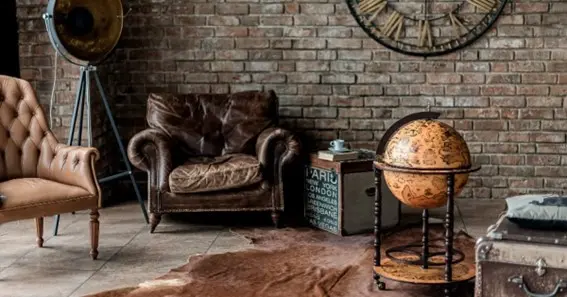Old and unique items hold a distinct allure. Beyond their aesthetic appeal, there’s a deep connection to history. Interest in historical items continues to grow. We find happiness in learning about their roots and keeping their memory alive.
The Timeless Allure
Old and antique stuff give us a real connection to past times. Old-fashioned things from the Victorian time are fancy and charming. There are also cool art deco pieces from the 1920s. They give us a view into different design styles. Their worn-out look tells the story of time in a way that factory-made items can’t copy. Owning these items allows us to physically connect with history.
Just as strong is the emotional bond. A vintage antique reminds us of the past, making our memories come back. Environmentally conscious individuals often prefer used items over new ones. So, the popularity of old-timey collectibles keeps on growing. The current era presents an ideal opportunity to rediscover these historical treasures.
Also Read N: The Benefits of Faxing from Your iPhone: Convenience at Your Fingertips
Uncovering the Rich History
The Significance of Historical Context
An item’s history adds significant meaning. People who have good records are worth 50% more to collectors. Understanding the origins and purpose of an item provides insights into the culture behind it. This helps us understand details that go deeper than just looking good.
Preserving and maintaining them in good condition depends on the materials and techniques employed during their creation. Lack of knowledge about history can often cause harm from poor handling. On the other hand, a good understanding keeps everything honest and protected for future use.
Navigating Through Different Eras
The Attractiveness of Antiques from Victorian Times
Victorian-era things are full of fancy details and show a lot of rich beauty. Their charm doesn’t just come from fancy looks, but also in the cleverness of Victorian people. Clever contraptions like kaleidoscopes capture the era’s fascination with optics and illusion. The movement’s eclectic variety mirrors the exciting exchange of ideas due to industrialization.
The Art Deco Allure of the 1920s
The sleek, stylized forms of Art Deco connect us to the glamor of early 20th-century modernity. As society reinvented itself following World War I, Art Deco captured electrifying new visions of the future. Its streamlined geometries resonated with technological innovations like automobiles and cinema. It promises speed and allure. Surging interest in this era reflects current societal parallels. It shows an evergreen attraction to the Roaring Twenties.
Mid-Century Modern Treasures
Mid-century modern design enjoys immense popularity for its timeless style. Contrary to the name, the period spans roughly 1933-1965. Clean lines and graceful shapes embody postwar fresh starts and youthful optimism. Warm, natural materials introduce textural interest to minimalist forms. These pieces feel both vintage and contemporary, at home in any era.
Preservation and Restoration
The Art of Maintaining Vintage Items
Proper preservation techniques stabilize vintage materials against deterioration. Light, humidity, pollution, and pests remain leading agents of decay. Storing textiles folded rather than hung, for instance, saves strain on fragile threads. Non-abrasive cleaning methods also prevent accumulated dirt from abrading surfaces. Following specialty guidelines CUSTOMIZES care to an object’s unique properties.
When to Restore and When to Leave As-Is
While careful restoration can breathe new life into collectibles, excessive restoration can compromise their authenticity. Conservation should aim to stabilize existing materials, not replace them. Well-intentioned but aggressive methods strip away original finishes and evidence of its history. The loss of original surfaces can result in a decrease of over 50% in value. Understanding appropriate restoration practices preserves aesthetics without sacrificing authenticity.
Also Read P: Navigating the Business Landscape Why Credit Unions Are Essential
The Thrill of the Hunt
Discovering hidden gems offers an addictive rush for collectors. The excitement of unearthing overlooked treasures remains universal across all eras and styles.
Scouring Flea Markets and Thrift Shops
Rummaging through stacks of disorder holds an enduring appeal. There’s something magical about finding antique collectibles value forgotten in a box of bric-a-brac. Over 60% of collectors report their greatest vintage scores from second hand shops.
These local institutions promise a replenishing supply of finds as stock rotates quickly. Building relationships with sellers helps get first dibs on coveted items. While offerings appear random, keeping an eye out for new merchandise delivers dividends. Patience paired with sharp eyes ultimately unearths diamonds in the rough.
The Joy of Auctions and Estate Sales
For those craving structure amidst the hunt, auctions and estate sales offer thrill with strategy. These events advertise contents ahead of time, allowing anticipation to build. Attendees still encounter joyful surprises inspecting pieces firsthand. Auctions often see coveted rare items emerge from private collections. They are offered on the market for the first time in decades.
Success requires cultivating individual hunting styles. Some choose to collect by focusing on niche categories aligned with their interests and expertise. Others take in the full scope of offerings with an eye for overlooked standouts. In competitive settings, setting logical price ceilings helps avoid getting swept up in auction fever.
Auctions and estate sales reward those bringing passion, patience, and a bit of healthy luck. Discovering the perfect piece amid intense bidding can bring a sense of hard-earned satisfaction.
Online Marketplaces and Vintage Boutiques
Online vintage marketplaces offer the advantages of convenience and a wide selection. The only downside is that they lack the old-world romance of dusty shop aisles. Large marketplaces connect sellers worldwide, providing a staggering array of inventory. Specialized shops also abound, allowing buyers to zero in on specific styles.
Reputable sellers consistently offer detailed condition descriptions and photographs highlighting any flaws. Scams do exist, but typically involving vague wording and stock images. As with any significant purchase, buyers should thoroughly vet sellers and pay securely.
Online marketplaces come with their own modern advantages. But they can’t replicate the adrenaline of unearthing hidden treasures in person. Both options have unique appeals in the ongoing pursuit of the perfect discovery.
The Investment Value
Beyond emotional connections, vintage and antique collectibles also show promising financial growth. Newly-produced goods embrace soulless mass production. Thus, items carrying the imprint of skilled artisans increase in scarcity and value. Even through recessions, niche collectibles markets have shown consistent annual expansion.
Understanding the Investment Potential
High-end collectibles are viewed as alternatives to traditional portfolios. Those usually consist of assets like stocks and bonds. They are more volatile than conventional holdings. But they provide returns competitive enough to merit investor attention. Over the past decade, the collectibles market saw compound annual growth rates of around 8%. They outpace average stock market gains.
Out of diverse collectible assets, fine art and antiques fetch the highest prices at auction. These categories benefit from global networking between major auction houses. Stratospheric sales like the recent $92 million auction of a Picasso work grab headlines. But sales occurring away from elite event circuitry still bring enough annual ROI. That way, they still appeal to serious collectors.
Tips for Smart Collecting
Successful speculation requires a watchful eye and flexible strategy. Newly unearthed historical archives reshape understanding of artists and eras. These trends can lead to significant fluctuations in valuations. Early adopters stand to benefit most from rising stars. Meanwhile, holding artists no longer attracting attention leads to stagnating prices.
Astute speculators also take into account surrounding social trends. For example, mid-century modern design saw a recent surge in value. It is aligned with retro-themed trends in fashion and graphic design. Such cultural patterns can precipitate or destroy investor interest. Keeping a pulse on the zeitgeist allows timely adjustments to portfolios.
Appraisals and Valuation
The financial worth of collectibles relies on expert assessments. Proper documentation and unbiased analysis serve to protect customer investments. They ensure fair market circulation.
An item’s value reflects scarcity, condition, provenance, and prevailing tastes. Unique, pristine-condition pieces with impeccable histories command higher valuations. However, timeless favorites often increase in value regardless of these factors. For example, rare coin collecting remains popular with investors. It sends valuations ever upward despite millions of copies in existence.
In the case of personal collections, professional appraisals are crucial for insurance purposes. They also assist in estate planning when passing down family heirlooms. In changing online marketplaces, frequent valuations also help owners understand optimal listing prices. For the market to remain fair, reliable authentication and ethics remain paramount.
Sentimental Legacy
The nostalgic attraction of vintage collectibles goes beyond aesthetics and investment potential. These pieces absorb intangible essence from their environment and connections over time. As they pass between owners, they accumulate a patina of memories building upon their material form.
Creating Meaningful Legacies
Tangibly engaging with history sparks imaginative connections to those who came before us. We perceive intimations of people and societies lost to living memory. This is through learned context and physical traces. Piece together clues hidden in creases and stains. We reconstruct possible stories about their origins.
These imagined bonds through material artifacts allow us to situate ourselves in a larger cultural lineage. Knowing your heirloom watch belonged to a great-grandfather connects you to his personal history. But even without named familial ties, vintage pieces link us to the wider fabric of humanity.
Owning this physical trace allows us to contribute our own chapter to an unfolding narrative. The personalized engravings, repairs, and restorations, you become entwined with the previous stewards. This tangible continuity powerfully defies the passage of generations.
Frequently Asked Questions
Are vintage and antique collectibles a good investment in today’s market?
Yes. Niche vintage and antique markets have demonstrated promising stability and consistent returns. As mass production dominates contemporary culture, well-preserved artifacts carry increasing scarcity value.
How can I determine the authenticity of vintage items?
Consult experienced appraisers to examine pieces for indicators of age and origin. Traceable provenance and appropriate wear-and-tear also help confirm authenticity. Examine any repairs or restorations in comparison to typical wear and tear for that era.
What are some common mistakes to avoid when starting a vintage and antique collection?
Avoid overpaying for questionable pieces at auction for the thrill. Vet sellers when buying online, and understand return policies before purchasing. Handle fragile items carefully to avoid damage – research proper archival materials. Finally, don’t restore pieces without professional guidance.
The Allure Endures
Despite changing tastes, the appeal of vintage collecting persists across eras. These well-loved artifacts retain irreplaceable traces of skill and ingenuity. Those cannot be replicated today. The nostalgia they invoke offers a way to reconnect with history. Let us keep seeking meaningful continuity between past and present. These precious objects will continue inspiring lifelong devotion. Their capacity to gather memories over the decades remains enduring.
So venture forth and uncover forgotten treasures hiding in plain sight. Revel in their rich patinas and intricacies – and add your own chapter to their enduring stories. The adventures of the open road or online auctions await.






